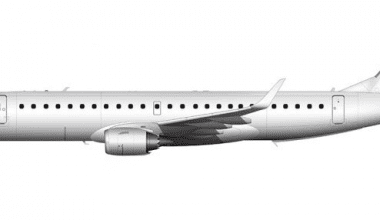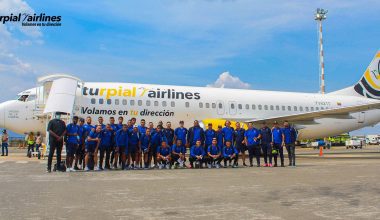The bustling metropolitan area of Mexico City has two airports to accommodate airline services. The primary air facility is Benito Juarez International Airport, aka Mexico City Airport (MEX), 5 km east of Downtown Mexico City. It is a significant passenger hub that has historically concentrated the majority of air traffic in Mexico. Over 40 million people fly in and out of Mexico City Airport annually, making it the nation’s busiest airport.

The newly-opened Felipe Angeles International Airport (NLU) is the secondary airport serving Mexico’s capital. The country’s newest facility intends to attract low-cost and cargo airlines to ease pressure at MEX Airport. Despite having sufficient capacity and infrastructure, NLU couldn’t reach the one million passenger mark in its first year of operations. The traffic through MEX has reached a saturation point and exceeds the airport’s current capacity. Albeit lacking the room to expand, Mexico City Airport continues to see strong passenger growth.
Mexico City Airport: A busy modern-day aviation hub
Mexico City Airport is a busy modern-day aviation hub and a primary gateway to Mexico. Heavily reliant on the country’s trade flows, business activities, and tourism, MEX has experienced a dramatic upturn in traffic in the last decade. Mexico City Airport set the record for most passengers in 2019 by breaking the 50 million passenger mark for the first time.

In 2021, the airport handled 36 million passenger movements while recording a year-to-year-increase of 64%. The number of travelers moving through MEX even grew in 2022 to 46 million. MEX is the busiest in Latin America by total passenger movements and second busiest in terms of enplaned international passengers.
Mexico City Airport features direct routes to more than 100 domestic and international destinations on four continents. It is a hub for Mexican flag carrier Aeromexico and low-cost Volaris and a focus city for Viva Aerobus. Around 30 carriers (domestic and international) operate flights at MEX, connecting the airport to major transport hubs within and outside the country.
Facilities at Mexico City International Airport
Mexico City Airport is a major metropolitan area airport hub with passenger-focused features and state-of-art infrastructures.
The airport has two terminals, T1 and T2, built over a surface area of 542,000sq.m and 242,666.55 sq.m, respectively.
Terminal 1 has nine check-in halls, ten airside halls, 22 baggage claim carousels, and 11 mobile lounges. The facility funnels millions of passengers every year through its 33-passenger loading bridges.
It has two floors; the ground floor is for baggage claims and international arrivals, and the upper floor is for departures.

The upper floor is split into three sections, with
- gates 1 to 15 (domestic departures, linked to Concourse B)
- gates 17-23 (international departures, linked to G and H halls)
- gates 24, 25-28, 29-36 (international departures, linked to concourses F1, F2, and F3)
Similarly, Terminal 2 hosts three landside halls, 15 baggage claim carousels, and two airside halls. Opened in 2007, terminal 2 isn’t as enormous as Terminal 1, but it has facilities passengers require for recreation and information. Terminal 2 consists of 23 gates across two halls, K (gates 52 to 62) and M (gates 62 to 75).
The parallel runways separate Terminal 1 and Terminal 2 three kilometers apart. Transfer between passenger terminals is possible via the Aerotren monorail system, which travels at 45km/hr. Aerotren is off-limits to the general public except for connecting passengers with hand baggage and boarding passes, technical and cabin crew. Differently able passengers are also authorized to travel on Airtrain in a wheelchair provided a family member or staff accompanies them.
Also Read: FAA prohibited Mexican carriers from adding flights to the United States
Besides Airtrain, inter-terminal transportation at MEX Airport is also possible via 24-hour public bus service.
The spacious terminal 1 hosts domestic and international operations of several carriers at MEX. Most airlines operating scheduled passenger services at MEX use Terminal 1. But, carriers like Aeromexico (including Aeromexico Connect), Copa Airlines, Delta, LATAM, etc. use Terminal 2. MEX Terminal 2 is a large hub for Aeromexico and handles most of the flag carrier’s flights.
Amenities at Mexico City Airport
On top of robust flight offerings, Mexico City Airport offers the following amenities to elevate the customer journey in MEX:
- Free Wi-Fi
Domestic and international passengers at MEX can connect to the free Wi-Fi network inside both air terminals. The free internet can connect up to 8 thousand users simultaneously without navigation restrictions. Travelers passing through MEX can use the internet service to connect with others online or access information about their next flights.
- ATMs and currency exchange booths
Travelers may find plenty of ATMs to withdraw cash on the first two levels of T1 and T2. Being an international airport, MEX hosts currency exchange stores in both terminals.
- 24/7 paramedical services
Emergency medical service is provided 24/7 with medical service teams and ambulances on call. The on-duty physician and nurse will provide aid and care to passengers, visitors, and employees and refer them to hospitals if required.
- Hotels
Travelers can savor the luxury experience and feel Mexico City’s hospitality at airport terminal hotels. MEX Terminal 1 has three hotels (IZzzleep, Hilton Hotel, and Courtyard Hotel), and Terminal 2 has one (Hotel NH Collection) to accommodate guests.
- Lounges
Several airlines operate lounges at MEX Airport to offer their passengers respite and escape from terminal hustles and bustles. Notable lounges include Avianca Lounge, American Airlines Admirals Club, United Club, Grand Lounge Elite, Lounge 19, etc. Qualifying customers can access the lounges of their respective airlines to relax and unwind during long transfers or before flying.
- Food outlets (Restaurants, bars, or cafes)
A chock-full of dining options are spread out in both terminals to satisfy every customer’s taste. MEX has plenty of food outlets offering various eating options- from sit-down dining to plane-ready take-out to suit travelers’ needs. Top-rated restaurants and cafes at MEX include Restaurant Bar Acuario, Krispy Kreme, Sushi Roll, Café Punta del Cielo, Alitas Y Micheladas Deisy, etc. Other notable eateries are Café De Olla, Coffee Crew Bar, Tamales y Atloes ‘Mi Angel,’ El Ache D Cristi, etc.
- Shopping stores
Those looking for a little retail therapy can traverse a variety of duty-free shops at Mexico City Airport. Travelers can arrive early and revel in various shopping outlets to discover all unique finds. Mexico City Duty-Free stores deliver an optimal shopping experience for customers with the best selection of top-notch products. Some popular brands at MEX Airport are Adolfo Dominguez, B Fashion, D’Love, Ferrioni, Hudson News, Sunglass Hut, Todo de Todo, THE WATCH CO., etc.

Airlines present at Mexico City International Airport
One frequently asked question is ‘What airlines fly out of Mexico City Airport.’ Around 30 passenger domestic and foreign airlines fly out of Mexico City Airport, with Aeromexico serving the largest cities. These carriers are responsible for ferrying 136,000 passengers on a typical day in and out of the airport.
MEX Airport hosts air services to 50 domestic and 64 international destinations around the world. It receives flights from all over the country and from popular cities in Latin America, North America, Europe, and Asia.
The largest operator at MEX is Aeromexico, which connects the airport to 46 domestic and 34 foreign cities. The low-cost carriers Volaris and VivaAerobus also have sizeable operations at MEX with robust network offerings.

Mexico City Airport enjoys the presence of several major foreign airlines in the country. Big US giants like Delta Air Lines, American Airlines, and United Airlines connect passengers between their US hubs and Mexico City. Atlanta-based Delta offers direct flights to MEX out of its six hubs. Similarly, AA customers can travel nonstop to Mexico from Charlotte, Dallas, Los Angeles, Miami, New York JFK, and Phoenix-Sky Harbor.
Mexico City Airport is also a crucial destination in United Airlines’ international route map. UA operates nonstop scheduled flights between MEX and its five US hubs (CHI, IAH, EWR, SFO, and IAD).
Other prominent foreign carriers serving MEX are Air Canada, Air France, All Nippon Airways, Avianca, British Airways, Lufthansa, KLM, etc. LATAM Airlines Group, the largest Latin American airline company, considers Mexico City a crucial destination. Its Brazil, Chile, and Peru subsidiaries serve MEX from Sao Paulo-Guarulhos, Santiago de Chile, and Lima, respectively.
Likewise, Turkish Airlines also provides scheduled services between MEX and Istanbul, with a stop in Cancun.
Busiest routes from Mexico City Airport
Quintana Roo-Cancun is the busiest route from Mexico City, with whopping 2 million annual passenger movements. Mexico City-Nuevo Leon is the next busiest route, which sees 1.6 million flyers annually. Routes to Jalisco, Guadalajara, Baja, California, and Tijuana also receive more than 1 million passengers yearly.
The bulk of the busiest routes from MEX are domestic, served mainly by Aeromexico, VivaAerobus, and Volaris. Regarding international operations, MEX’s top destination is Madrid, Spain, with annual 0.45 million air traffic. It is followed by Houston and Los Angeles, US, with 0.431 and 0.41 million passenger movements in a year.






